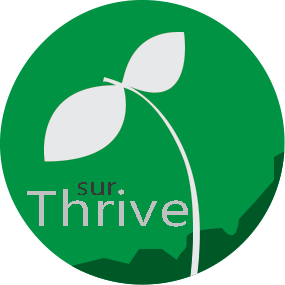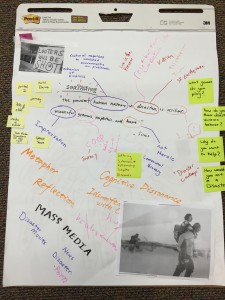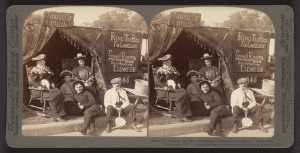“… The ETC team will be creating a game that changes players’ ideas about how people act post-disaster – a counter to the news stories and disaster movies…”
Stepping into our project room on Monday, this was the bulk of what we knew about our project. It wasn’t a lot, but it was enough to get our imaginations running. Monday was mostly spent setting up our room and getting to know each other, but on Tuesday we got straight to work, brainstorming ideas based on our understanding of the project. We began by sharing inspirations, games and movies that we thought might be relevant to a disaster scenario. We also began discussing books and other resources we might look to for information about how people react to disasters. Fortunately, this was all made a lot simpler when we met with our client/advisor (hereafter known as clivisor), who it turns out had already dug up several sources for us.
She told us about content experts we could talk with, as well as several readings she thought would be useful. One in particular, “A Paradise Built in Hell” by Rebecca Solnit had been referenced in the original description of our project, and so we decided that would be a good place to start. We decided to begin by reading the book’s introduction, and then expand our research from there. The introduction presents an unusual and somewhat surprising thesis: that disasters can be, and often are, positive experiences for those who go through it. While they’re often portrayed in media as the perfect setting for violence, destruction, and looting, in reality they are an opportunity for people to get to know each other, and escape from the everyday boredom of their lives.
We had the perfect opportunity to put our reading into practice on Friday, when we had the Playtest to Explore workshop. We needed to put together the inspirations and motivations for the project, so we began with an excerpt of a quote by Solnit and expanded from there.
We also used this as an opportunity to discuss our thoughts on the reading, and do our own research into disasters. For example, the first chapter of Solnit’s book discusses the lengths people went to to help each other during the 1906 San Francisco Earthquake, and the levity with which they treated the situation. To be honest, I didn’t believe her until I did my own research through the Library of Congress’s database.
Sure enough, there are pictures of exactly what Solnit describes: temporary shelters complete with comical signs. Flora, our artist and co-producer, had actually lived through catastrophic earthquakes in Taiwan, and interestingly her experiences line up with Solnit’s description. She said that even though many people died, and witnessed their friends dying in front of them, for others it was a calm, even liberating experience. Meanwhile Jonathan and Pepin began watching old news reports of Hurricane Katrina and the 2004 Indian Ocean Tsunami. Jonathan found that the general sense was that Katrina was being handled poorly, and there was a need for the government to step in to control people. He also began reading “The Shock Doctrine” by Naomi Klein, which describes how businesses view devastating disasters as a chance to move in and make money. Dandan contributed by watching a documentary about the 1976 Tangshan Earthquake, which was one of the deadliest earthquakes in recent history.
Obviously there is much more research to be done, but all this was incredibly useful for getting us all up to speed on how people respond to disasters, and how that differs from the media coverage of it.


